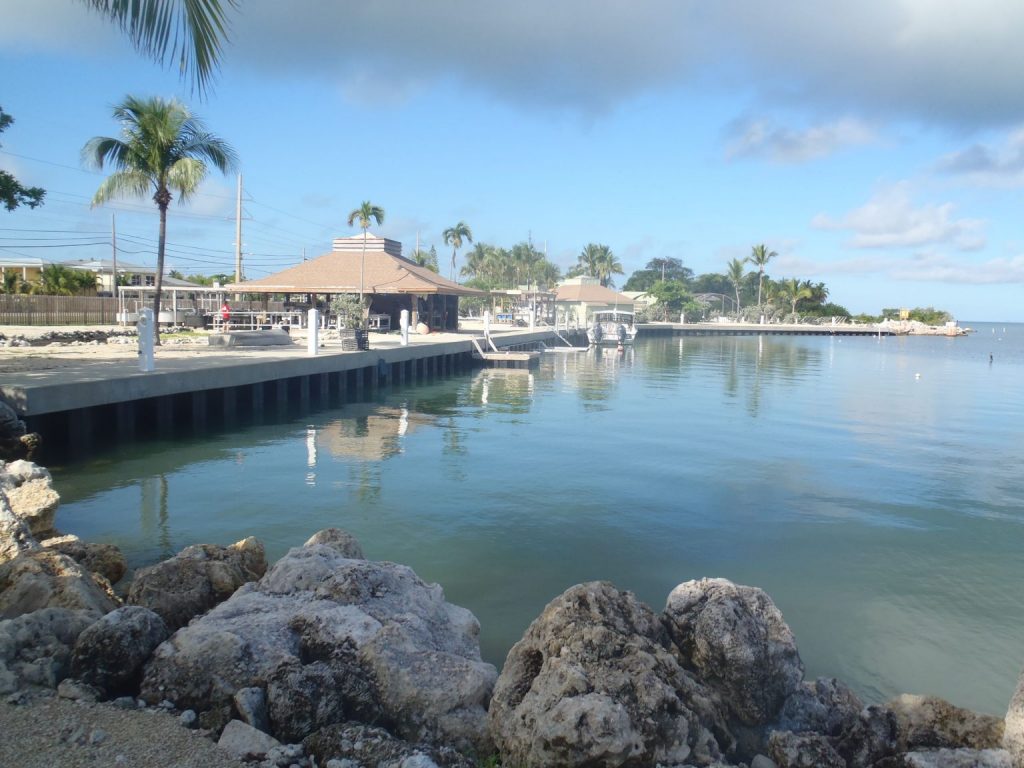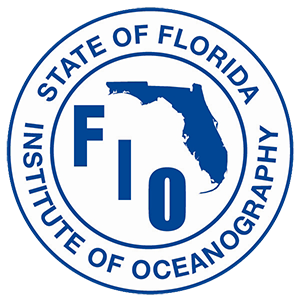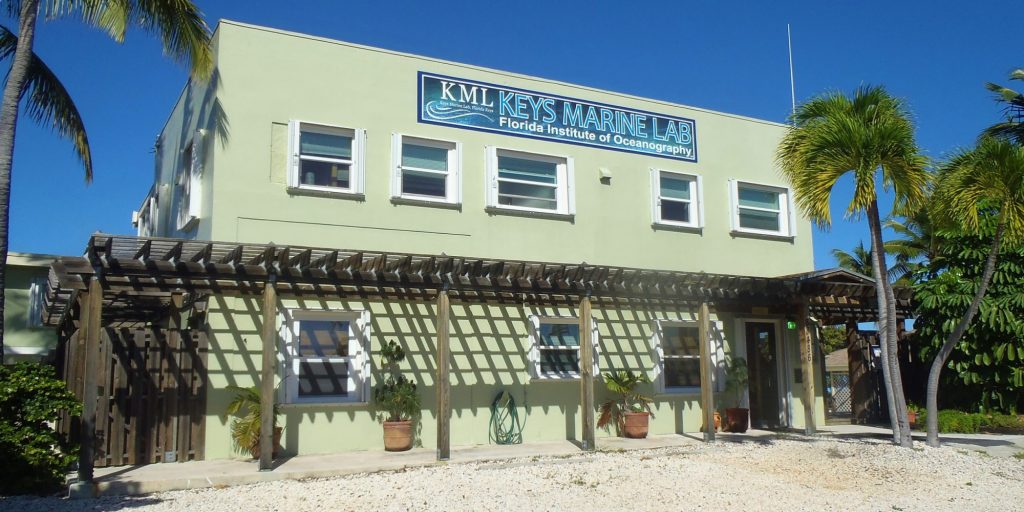
The Keys Marine Laboratory and Long Key, the island on which it resides, have had a long and interesting history, with periods of calm and prosperity punctuated by the destruction rendered by hurricanes, which in some ways describes the history of the Keys in general. An interesting mix of occupants have resided at the KML site over the years, culminating with the construction of the laboratory facilities you see today. If you are interested in a more thorough history of Long Key and the Keys in general we have several recommendations for excellent books and websites detailing the history of this area. Check out the Keys Historeum online at www.keyshistory.org.
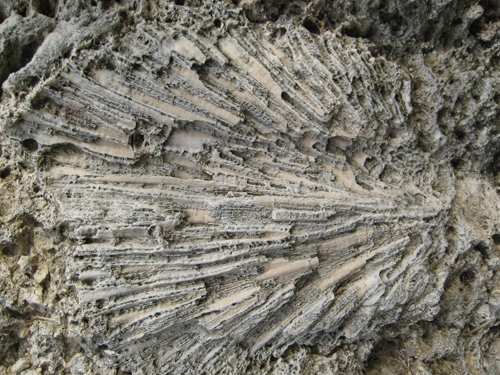
From the Florida Geological Survey
1.8 million years ago, a shallow sea covered what is now south Florida. From that time to about 10,000 years ago, often called the Pleistocene “Ice Ages,” world sea levels underwent many fluctuations of several hundred feet, both above and below present sea level. Colonies of coral became established in the shallow sea along the rim of the broad, flat Florida Platform and the subtropical climate allowed the corals to grow rapidly and in great abundance, forming reefs. As sea levels fluctuated, the corals maintained footholds along the edge of the platform; their reefs grew upward when sea level rose, and colonies retreated to lower depths when sea levels fell. During times of rising sea levels, dead reefs provided good foundations for new coral growth. The last major drop in sea level exposed the ancient reefs, which are the present day Florida Keys island chain.
High water mark, seawater levels cover most of present-day South Florida.
Low water mark, most of the Florida Shelf exposed.
Present day reefs are flooded as ocean rises to its current level.
From the Historical Preservation Society of the Upper Keys
Early Spanish charts show Long Key as Cayo Vivora or Bivora, which meant Viper Key, a name it kept for a long time. The Blunt chart of 1864 named it Long Island that eventually became Long Key. Between 1880 and 1885, brothers Thomas and Edward Hines, and Samuel Filer purchased most of the island and planted coconut trees on the southern end for producing anchor lines. As part of the Key West Extension to the Florida East Coast Railway, work began on the Long Key Viaduct. Shortly after, in 1906 a hurricane struck, washing a crew boat out to sea, where it broke up and 67 workers were lost. After completion of the railroad, the Long Key stop serviced the Long Key Fishing Camp, where the famous writer Zane Grey often vacationed.
In charts published by Edmund Blunt, the authority for navigation at that time, present day Long Key is labeled “Long Island,” soon to be known as Long Key.
Most of Long Key purchased for coconut plantations.
Construction of Long Key Viaduct begins.
Hurricane strikes Long Key, work crew lodging boat breaks loose.
Construction of Long Key Viaduct is completed
First post office is established on Long Key.
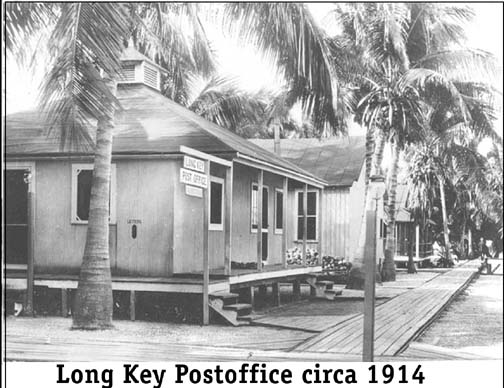
The author Zane Grey spends his first winter fishing on Long Key.
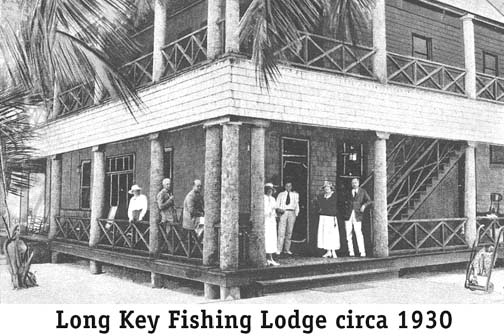
Long Key Fishing Club is officially formed with Zane Grey serving as president.
After WWII Del and Mary Layton, Grocery Store owners from Miami, purchased 40 acres of land on Long Key. Layton increased the size of his holdings and established a restaurant and cabins, which eventually became “Layton’s Long Key Fishing Camp.” In 1963, Layton was officially incorporated, although Layton’s efforts to change the name of the post office failed. At the KML Site, a busy marina ran through the 1950’s and 60’s.
On Labor Day, 1935, one of the strongest hurricanes ever to strike the continental US hits the upper keys. The Unnamed Labor Day Hurricane hits shore packing winds of 185mph and a storm surge of up to 35 feet. The eye passed directly over the Long Key Fishing Camp and wiped away everything but the memory. The communities on and surrounding Long Key are devastated and over 400 lives are lost. The railroad is shut down and work begins to build the overseas highway on the former rail-bed.
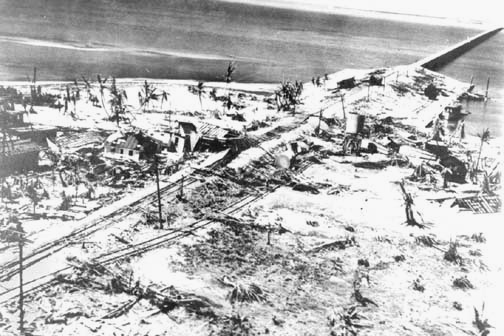
Overseas Highway built over old railroad bed and bridges.
Del Layton purchases 40 acres on Long Key for new Long Key Fish Camp.
First cottages transported to Long Key – wooden war surplus buildings 16’ x 16.
Running water supplied to Layton’s Long Key Cottages from the Navy pipeline.
Layton Marina and Bait & Tackle (now KML Admin building) and Layton’s Long Key Fish Camp with 9 cabins.
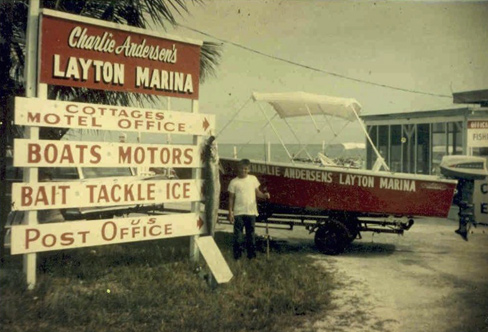
Layton buys additional 40 acres and sub-divides 150 lots to become Long Key Estates (oceanside of US 1).
1st of 6 canals dug in Long Key Estates.
10 active businesses housed in the original concrete buildings (including grocery store, bait shop, post office, motel).

Hurricane Donna – 13’ storm surge on Long Key; Long Key settlement referred to as “Layton” during the rebuilding efforts.
Layton post office officially becomes Long Key Post Office.
City of Layton becomes 3rd oldest incorporated city in Monroe County, Del Layton elected the 1st mayor.
Hurricane Betsy passes over the Upper Keys.

In the mid-1970’s, the property was run for a brief time as a novelty store called “Gilligan’s Island”. It is rumored that Del Layton often crossed US 1 brandishing his shot gun at the “hippies” in residence.
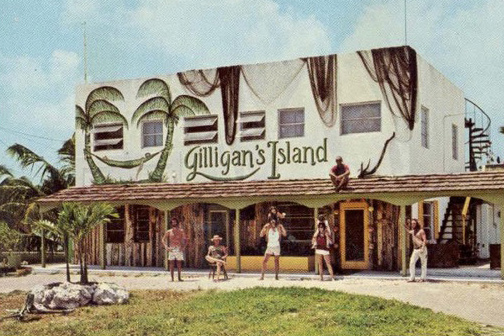
Long Key post office moves across the street into the new building across from what is now KML.
In 1978, the property changed hands again as Sea World of Florida develops Sea World Shark Institute as a public attraction & research center on the site of the Layton Marina.
Sea World facility on Long Key closes to the public after proving to be unprofitable but continues its internal research and animal husbandry projects as Shark Research Institute.
Long Key Shark Festival held at Shark Institute – fund raiser for Upper Keys Children’s Shelter.
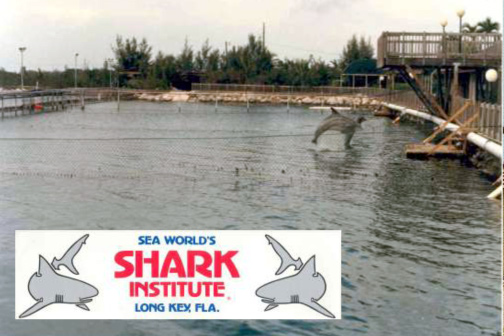
In July, 1983, the Florida Institute of Oceanography (FIO), a consortium under the State University System of Florida entered into a cooperative agreement with Sea World to use the facility for research and education programs for Florida’s state universities.
FIO enters into a cooperative agreement with Sea World to use the facility for research and education programs for Florida’s state universities.
FIO formed partnership with DNR (now FWC) to jointly manage the new Keys Marine Lab.

In addition, scientists from other states were encouraged to use the facility, and many became regular users. This relationship continued until Sea World determined that the property had to be liquidated. Based on its academic interests and involvement in the property, FIO surveyed the research and education community statewide and concluded that there was a substantial user community dependent on the continued availability of KML for a variety of research and academic programs. In addition, a broader regional survey suggested a much larger potential user community existed for a “full service” marine laboratory with access to the unique ecosystems of south Florida, Florida Bay, and the Florida Keys chain.

The state decided to make a move and in 1988, The Nature Conservancy actually purchased the facility from Sea World until the necessary legislation was in place. A coalition was forged between the FIO and FWC to jointly own and operate the KML as a combined state-owned research and education facility, thereby justifying the substantial capital outlay required.
The State of Florida completed purchase of the facility in August 1990, and the FIO entered into a formal inter-agency agreement with the FWC to operate the facility under joint jurisdiction of FIO and the Fish and Wildlife Research Institute (FWRI).
The Nature Conservancy purchases the facility from Sea World and holds the property for FWC/FIO.
Keys Marine Lab formally dedicated.
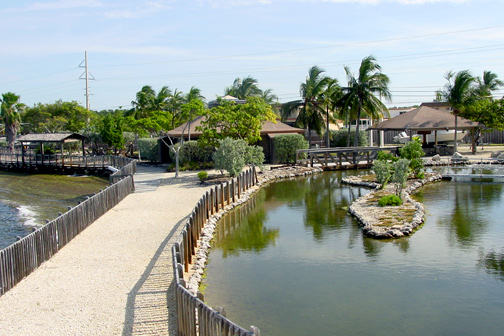
The Keys Marine Laboratory was dedicated and commenced its official joint state agency operations on February 1, 1991. During this time period, despite aging facilities left over from Sea World, the lab flourished, supporting research and education groups from all over the state of Florida and from institutes from other parts of the country such as Georgia, New York, Alabama, and Virginia.
Hurricane Wilma – 5’ storm surge floods KML facility.
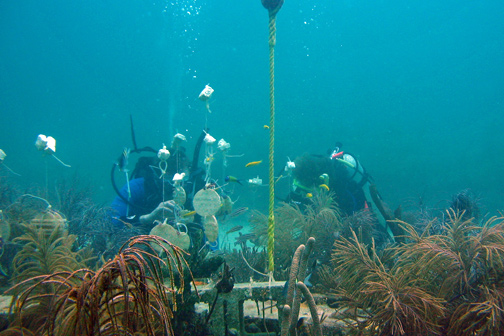
The lab was highly active during this period right up until October 24, 2005, when Hurricane Wilma made landfall at Cape Romano, FL as a category 3 storm. Although landfall was several hundred miles away, the storm surge into Florida Bay completely flooded the lab with several feet of water, cresting at the top of the Overseas Hwy.
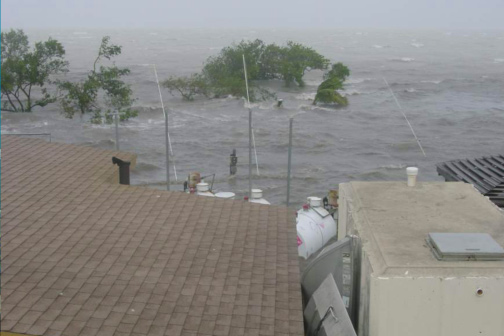
After the waters receded it revealed that the lab had lost most of the wooden walkways and much of the ground floor of each building was destroyed. Many tanks and animals were lost and the lab had to be closed to the public indefinitely. And so began the long period of reconstruction.
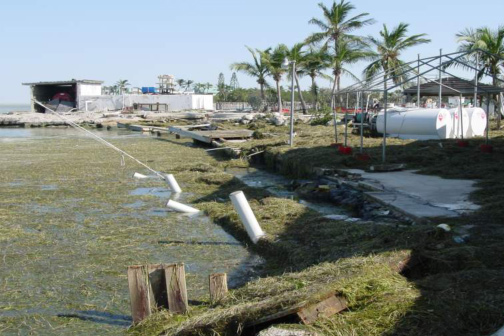
After Wilma, cleanup and construction of a completely refurbished marine lab began. First, clean-up of the debris from the storm and ruined buildings was necessary. Once the grounds were cleared, the construction of the new lab proceeded. This included, most importantly, the construction of a reinforced concrete seawall and dock for the marina and lagoon near the wet lab. During the construction of the new seawall and docks, the dorms, labs, classroom, administration building, and shop were all refurbished, and the seawater system was completely redesigned. All of this finished with a coating of fresh gravel, finishing up the new look and feel of the lab. While improvement projects will continue, the lab was back to full-time status as of 2009.
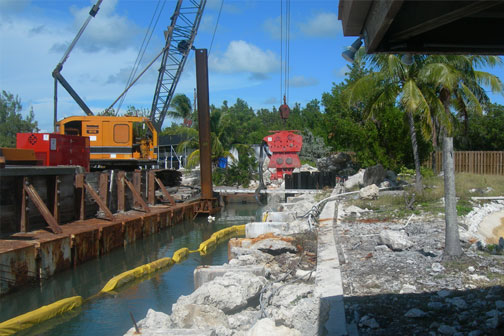
KML fully operational again and moving forward with facility modernization efforts.
